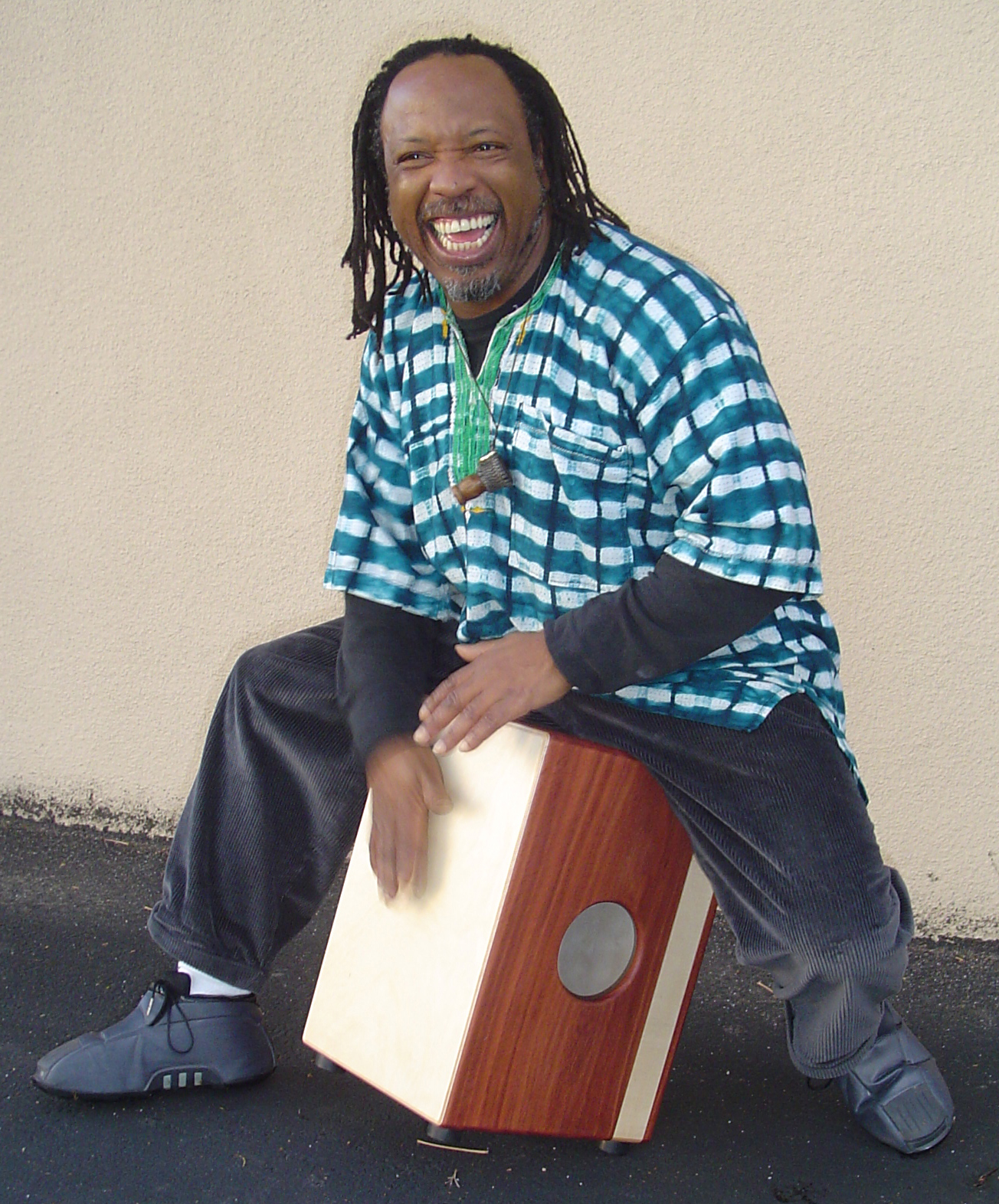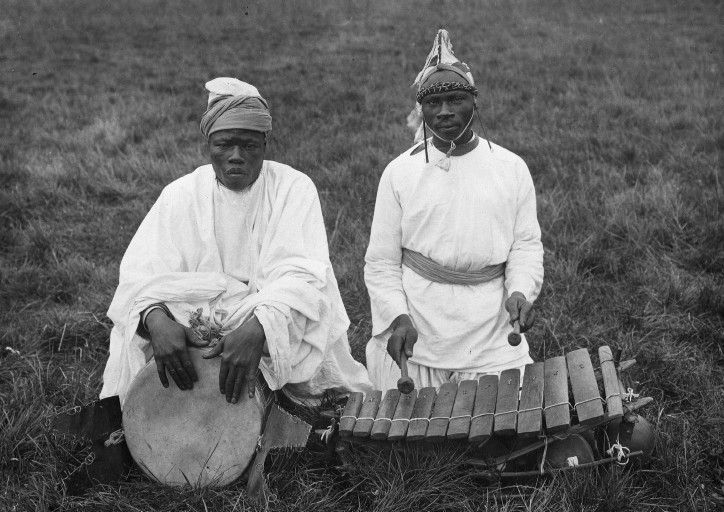|
Cajón
A cajón (; "box", "crate" or "drawer") is a box-shaped percussion instrument originally from Peru, played by slapping the front or rear faces (generally thin plywood) with the hands, fingers, or sometimes implements such as brushes, mallets, or sticks. Cajones are primarily played in Afro-Peruvian music (specifically música criolla), but has made its way into flamenco as well. The term cajón is also applied to other box drums used in Latin American music, such as the Cuban cajón de rumba and the Mexican cajón de tapeo. Description Sheets of 13 to 19 mm (1/2 to 3/4 inch) thick wood are generally used for five sides of the box. A thinner sheet of plywood is nailed on as the sixth side, and acts as the striking surface or head. The striking surface of the cajón drum is commonly referred to as the ''tapa''. A sound hole is cut on the back side. The modern cajón may have rubber feet, and has several screws at the top for adjusting percussive timbre. Originally the ins ... [...More Info...] [...Related Items...] OR: [Wikipedia] [Google] [Baidu] |
Cajón De Rumba
The cajones de rumba are wooden boxes used as rhythmic percussion instruments in some styles of Cuban rumba. There are different types of cajones, namely the ''cajón tumbadora'', the ''cajón bajo'' and the ''cajita'', all of which are hand-struck. Cajones arrived to the docks of Matanzas and Havana in the 19th century. They were full of imported fish, mainly cod, but quickly repurposed as drums by the Afro-Cuban dockworkers. The big boxes were the precursors of the modern tumbadora and the small ones corresponded to the modern quinto (the smallest, lead conga drum). The equivalent of claves were two wooden spoons. Although cajones were mostly replaced by tumbadoras by the early 20th century, they are played in contemporary styles such as guarapachangueo. In this regard, Pancho Quinto is a notable crafter and player of the instrument. Miguel "Angá" Díaz often played the cajón as well. See also *Cajón A cajón (; "box", "crate" or "drawer") is a box-shaped percussi ... [...More Info...] [...Related Items...] OR: [Wikipedia] [Google] [Baidu] |
Cajón De Tapeo
The cajón de tapeo, tapeador, cajón de tamboreo or Mexican cajon is a wood box drum traditional to southern Mexico. It is played by slapping the top face with a piece of wood in one hand, and a bare hand. It was developed as a substitute of the (wood sound-box platform for zapateado dancing) of Oaxaca and Guerrero. It usually follows 3/4 and 6/8 time signatures. In 1962, musicologist wrote a description of its use in Jamiltepec, Oaxaca. See also *Cajón A cajón (; "box", "crate" or "drawer") is a box-shaped percussion instrument originally from Peru, played by slapping the front or rear faces (generally thin plywood) with the hands, fingers, or sometimes implements such as brushes, mallets, o ... References * * External linksPhoto - cajón de tapeo {{DEFAULTSORT:Cajon de tapeo [...More Info...] [...Related Items...] OR: [Wikipedia] [Google] [Baidu] |
Perú Negro
Perú Negro is an Afro-Peruvian musical ensemble founded in 1969 to celebrate and preserve Peru's black culture and ''música criolla''. Ronaldo Campos de la Colina founded the Lima-based group with 12 family members. The group has been appointed by the government of Peru as the "Cultural Ambassadors of Black Peru." When Ronaldo Campos died in 2001, his son Rony Campos took over the direction of the troupe. Today, the group has over 30 members and a youth troupe, Peru Negrito. The group's album, Sangre de un Don led to the first ever U.S. tour in 2002. In 2005 the group was honored with two Grammy nominations for their second US album, Jolgorio. The first nomination came through the Latin Grammys’ traditional music category and the second for the Grammy's World Music category and in 2008 the group received another Grammy nomination for their album Zamba Malato. In 2010, the group teamed up with famed Peruvian singer, Eva Ayllon to record the album 40 years of Afro Peruvian Classi ... [...More Info...] [...Related Items...] OR: [Wikipedia] [Google] [Baidu] |
Percussion Instrument
A percussion instrument is a musical instrument that is sounded by being struck or scraped by a beater including attached or enclosed beaters or rattles struck, scraped or rubbed by hand or struck against another similar instrument. Excluding zoomusicological instruments and the human voice, the percussion family is believed to include the oldest musical instruments.''The Oxford Companion to Music'', 10th edition, p.775, In spite of being a very common term to designate instruments, and to relate them to their players, the percussionists, percussion is not a systematic classificatory category of instruments, as described by the scientific field of organology. It is shown below that percussion instruments may belong to the organological classes of ideophone, membranophone, aerophone and cordophone. The percussion section of an orchestra most commonly contains instruments such as the timpani, snare drum, bass drum, tambourine, belonging to the membranophones, and ... [...More Info...] [...Related Items...] OR: [Wikipedia] [Google] [Baidu] |
Festejo
''Festejo'' (from Spanish 'fiesta') is a festive form of Afro-Peruvian music. The dance is a staple in the Black coastal populations and it celebrates the emancipation of slaves. Festejo is recognized for its high energy and the improvisation carried out by the dancers. Some believe that its origins trace back to competitive dance circles performed by individuals playing cajóns. Despite its African origins, people of all different backgrounds participate in the dance that many regards as one of the greatest representations of Peruvian culture. It is currently performed, in its most traditional form, in San Luis de Cañete and El Carmen District, Chincha (Chincha). History There are theories that describe the Festejo as a dance that began in Lima in the mid-17th century, but they do not provide evidence to support these hypotheses. No musical example has yet been established to show that this musical form existed before 1800. However, some Festejos dating from the 19th centur ... [...More Info...] [...Related Items...] OR: [Wikipedia] [Google] [Baidu] |
Caitro Soto
Pedro Carlos Soto de la Colina (23 October 1934, San Luis, Cañete, Peru – 19 July 2004, Lima, Peru), popularly known as Caitro Soto, was an Afro-Peruvian musician and composer. He was known for his version of the Peruvian folk song, " Toro Mata" and as part of the Afro-Peruvian artist's collective Peru Negro. Peru Negro, located in Lima, is one of the most important organizations dedicated to preserving Afro-Peruvian music, dance and culture. Soto appeared in '' The Motorcycle Diaries'' as "Papá Carlito", a resident of the leper colony at San Pablo, Peru. There is a book by Caitro Soto written in Spanish with an accompanying compact disc entitled ''De Cajón: Caitro Soto – el duende en la música Afroperuana'', published by el Comercio in Lima, Peru, in 1995. Filmography References External linksDe cajón : el duende en la música afroperuanaat WorldCat WorldCat is a union catalog that itemizes the collections of tens of thousands of institutions (mostly libraries ... [...More Info...] [...Related Items...] OR: [Wikipedia] [Google] [Baidu] |
Latin American Music
The music of Latin America refers to music originating from Latin America, namely the Romance-speaking regions of the Americas south of the United States. Latin American music also incorporates African music from enslaved African people who were transported from West and Central Africa to the Americas by European settlers, as well as music from the Indigenous peoples of the Americas. Due to its highly syncretic nature, Latin American music encompasses a wide variety of styles, including influential genres such as cumbia, bachata, bossa nova, merengue, rumba, salsa, samba, son, and tango. During the 20th century, many styles were influenced by the music of the United States giving rise to genres such as Latin pop, rock, jazz, Latin hip hop, hip hop, and reggaeton. Geographically, it usually refers to the Spanish and Portuguese-speaking regions of Latin America, but sometimes includes Francophone countries and territories of the Caribbean and South America as well. It also ... [...More Info...] [...Related Items...] OR: [Wikipedia] [Google] [Baidu] |
Percussive
A percussion instrument is a musical instrument that is sounded by being struck or scraped by a beater including attached or enclosed beaters or rattles struck, scraped or rubbed by hand or struck against another similar instrument. Excluding zoomusicological instruments and the human voice, the percussion family is believed to include the oldest musical instruments.''The Oxford Companion to Music'', 10th edition, p.775, In spite of being a very common term to designate instruments, and to relate them to their players, the percussionists, percussion is not a systematic classificatory category of instruments, as described by the scientific field of organology. It is shown below that percussion instruments may belong to the organological classes of ideophone, membranophone, aerophone and cordophone. The percussion section of an orchestra most commonly contains instruments such as the timpani, snare drum, bass drum, tambourine, belonging to the membranophones, and cy ... [...More Info...] [...Related Items...] OR: [Wikipedia] [Google] [Baidu] |
Matanzas, Cuba
Matanzas (Cuban ) is the capital of the Cuban province of Matanzas. Known for its poets, culture, and Afro-Cuban folklore, it is located on the northern shore of the island of Cuba, on the Bay of Matanzas (Spanish ''Bahia de Matanzas''), east of the capital Havana and west of the resort town of Varadero. Matanzas is called the ''City of Bridges'', for the seventeen bridges that cross the three rivers that traverse the city (Rio Yumuri, San Juan, and Canimar). For this reason it was referred to as the "Venice of Cuba." It was also called "La Atenas de Cuba" ("The Athens of Cuba") for its poets. Matanzas is known as the birthplace of the music and dance traditions danzón and rumba. History Matanzas was founded in 1693 as ''San Carlos y San Severino de Matanzas''. This followed a royal decree ("''real cédula''") issued on September 25, 1690, which decreed that the bay and port of Matanzas be settled by 30 families from the Canary Islands. Matanzas was one of the regio ... [...More Info...] [...Related Items...] OR: [Wikipedia] [Google] [Baidu] |
Codfish
Cod is the common name for the demersal fish genus '' Gadus'', belonging to the family Gadidae. Cod is also used as part of the common name for a number of other fish species, and one species that belongs to genus ''Gadus'' is commonly not called cod (Alaska pollock, ''Gadus chalcogrammus''). The two most common species of cod are the Atlantic cod (''Gadus morhua''), which lives in the colder waters and deeper sea regions throughout the North Atlantic, and the Pacific cod (''Gadus macrocephalus''), found in both eastern and western regions of the northern Pacific. ''Gadus morhua'' was named by Linnaeus in 1758. (However, ''G. morhua callarias'', a low-salinity, nonmigratory race restricted to parts of the Baltic, was originally described as ''Gadus callarias'' by Linnaeus.) Cod is popular as a food with a mild flavour and a dense, flaky, white flesh. Cod livers are processed to make cod liver oil, a common source of vitamin A, vitamin D, vitamin E, and omega-3 fatty acids (E ... [...More Info...] [...Related Items...] OR: [Wikipedia] [Google] [Baidu] |
Susana Baca
{{disambiguation ...
Susana may refer to: * Sustainable Sanitation Alliance (SuSanA), a network of organizations active in the field of sustainable sanitation * Susana (given name), a feminine given name (including a list of people with the name) * ''Susana'' (magazine), an Argentine magazine for women * ''Susana'' (film), a 1951 Mexican film *Susana (singer), a Dutch trance music vocalist *''Susana'', a 1992 song by Ricky Martin, a cover version of '' Suzanne'' by VOF de Kunst See also *Santa Susana (other) *Susanna (other) Susanna may refer to: People * Susanna (Book of Daniel), a portion of the Book of Daniel and its protagonist * Susanna (disciple), a disciple of Jesus * Susanna (given name), a feminine given name (including a list of people with the name) Fi ... [...More Info...] [...Related Items...] OR: [Wikipedia] [Google] [Baidu] |



.jpg)